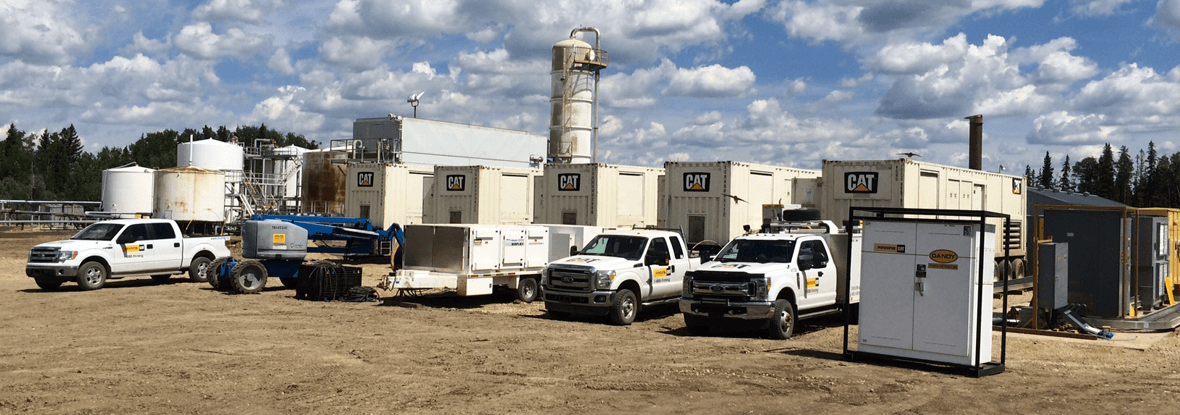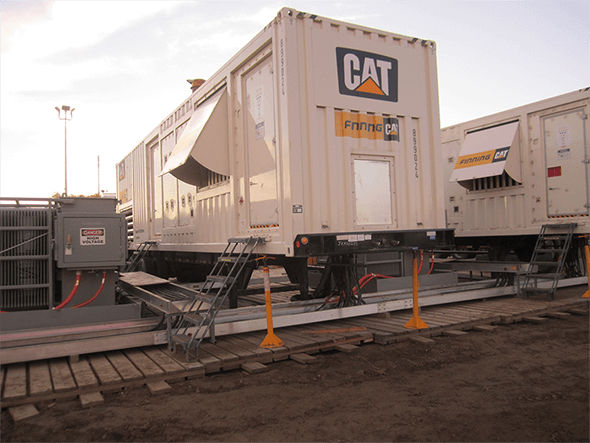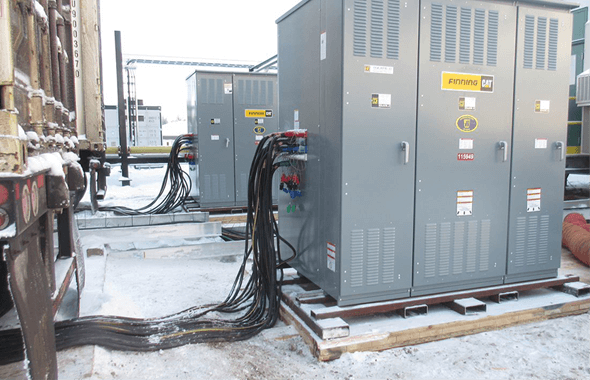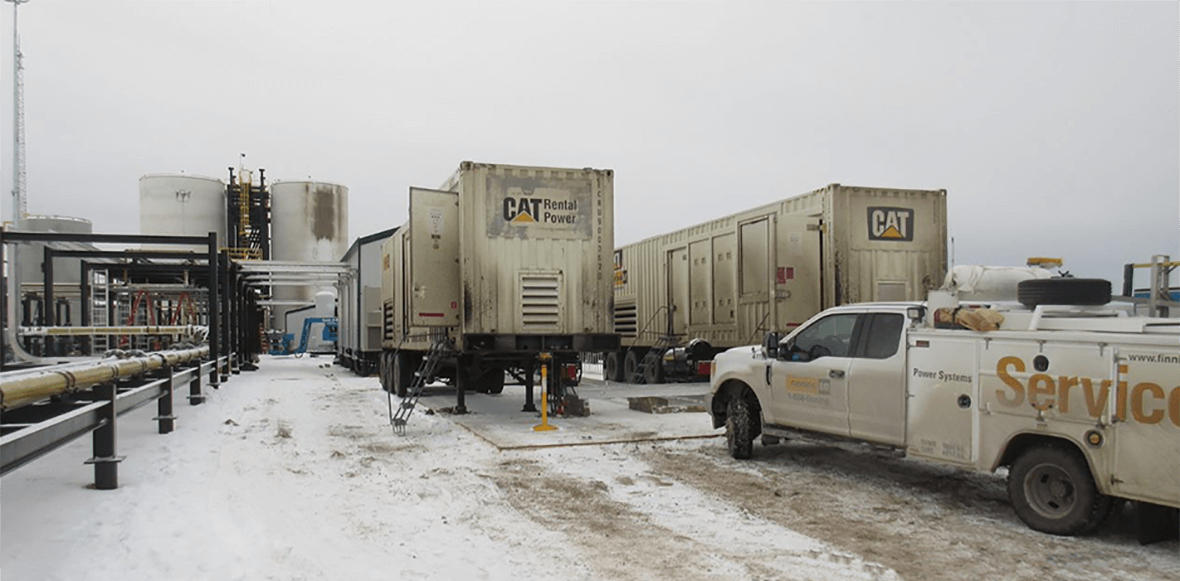
When Tervita, a leading Canadian provider of environmental, waste management and energy services approached Finning in 2020 for power generation for one of its clients, they already had a sustainable solution in mind. “Tervita was looking for a temporary electric power solution for the Kakwa Power Project, a new gas processing facility just south of Grande Prairie, Alberta,” said Ryan Leslie, power sales rep for Finning Canada. “They wanted to reduce greenhouse gas (GHG) emissions and keep costs down, so they were looking to use compressed natural gas (CNG) versus diesel to fuel their generators. It burns cleaner, is more cost effective, and you have no risks of a spill as it is a gas versus a liquid.”
Kevin Oriold, Lead of Supply Chain Management for Tervita, was in charge of finding a solution for the Kakwa Power Project start-up operations before a permanent power solution was in place. According to Kevin, “Our company is always looking for ways to deliver services that are environmentally-responsible. We identified the bi-fuel (CNG) generation as a possible replacement for more traditional fuel options because of its cleaner, lower emission profile.” CNG is a proven power source for its reliability, scalability, and lower service costs, and the use of Finning’s natural gas generators met both Tervita’s operating and procurement standards and their goal of providing smaller to zero carbon services.
Tervita partners with companies that share their commitment to continuous improvement and offering innovative solutions to clients. “Personally, I have always found Finning to be a solution-driven service provider that delivers efficient, timely, and cost-effective solutions,” says Oriold. “Based on past experience, I believed Finning would help us find the best solution for the type of generation and the power required.”
Finning provided Tervita with a temporary power solution which included two Cat XQ1475G natural gas engines and electrical distribution gear in addition to remote access monitoring capabilities. Customers can use remote access monitoring to log in and see real-time data and monitor loads and fault codes on the equipment 24/7. “You can also set up the system to be pinged or receive a text message to be notified of an alarm or fault code so you can deal with issues immediately to avoid failures and downtime,” says Ryan.


Choosing CNG over diesel was new for Tervita but using an alternate fuel source resulted in substantial benefits for their client. “Not only was this a more sustainable solution that involved significant cost-savings, but the use of CNG also extended maintenance intervals,” says Ryan. “Diesel engines require service every 500 hours, whereas the gas-powered engines only need servicing every 1,500 hours.” Tervita realized the benefits immediately. “While we analyzed the reduction in GHG emissions, we realized that we were also meeting requirements for reliability, operating cost, lease footprint, and serviceability,” said Oriold. “Plus, the reduced number of service visits meant a reduction in miles driven, decreasing traffic and the potential for accidents – as well as reducing wear and tear on our vehicles, which aligns with our company environmental, social, and governance (ESG) philosophy.”


According to Tervita, the Kakwa Power Project was a success based on their ability to meet the customer’s needs within the required timeline. However, several other important project metrics were also met or exceeded.
“Tervita wanted to use natural gas to fuel the project and we identified the power need, equipment required and acted as the solution provider,” says Ryan. “Typically, we are the ones offering customers alternate solutions, so it was really exciting to be working with a company that had the foresight and the capability to make this project happen.”
This internal alignment helped Tervita deliver a unified and effective power strategy to their customer. “Having Finning involved in the early stages of project planning was key to the successful implementation of the project,” says Oriold. “Finning supported our engineering and operations teams in the review of our power requirements to ensure alignment and bi-fuel compatibility. This coordination continued into the field as Finning worked directly with our fuel provider to ensure that the site implementation was seamless and without incident. The roll-out of this project has now become a template for how Tervita procures and delivers non-standard equipment.”


“In the end we were extremely pleased with the outcomes,” says Ryan. ”Plus the fact that we helped the customer meet their goals of providing an innovative, solution that saved both money and the environment.”
Click here for more information on power generation solutions.
[1] Computed using the 2018 B.C. Methodological Guidance for Quantifying Greenhouse Gas Emissions
Share This